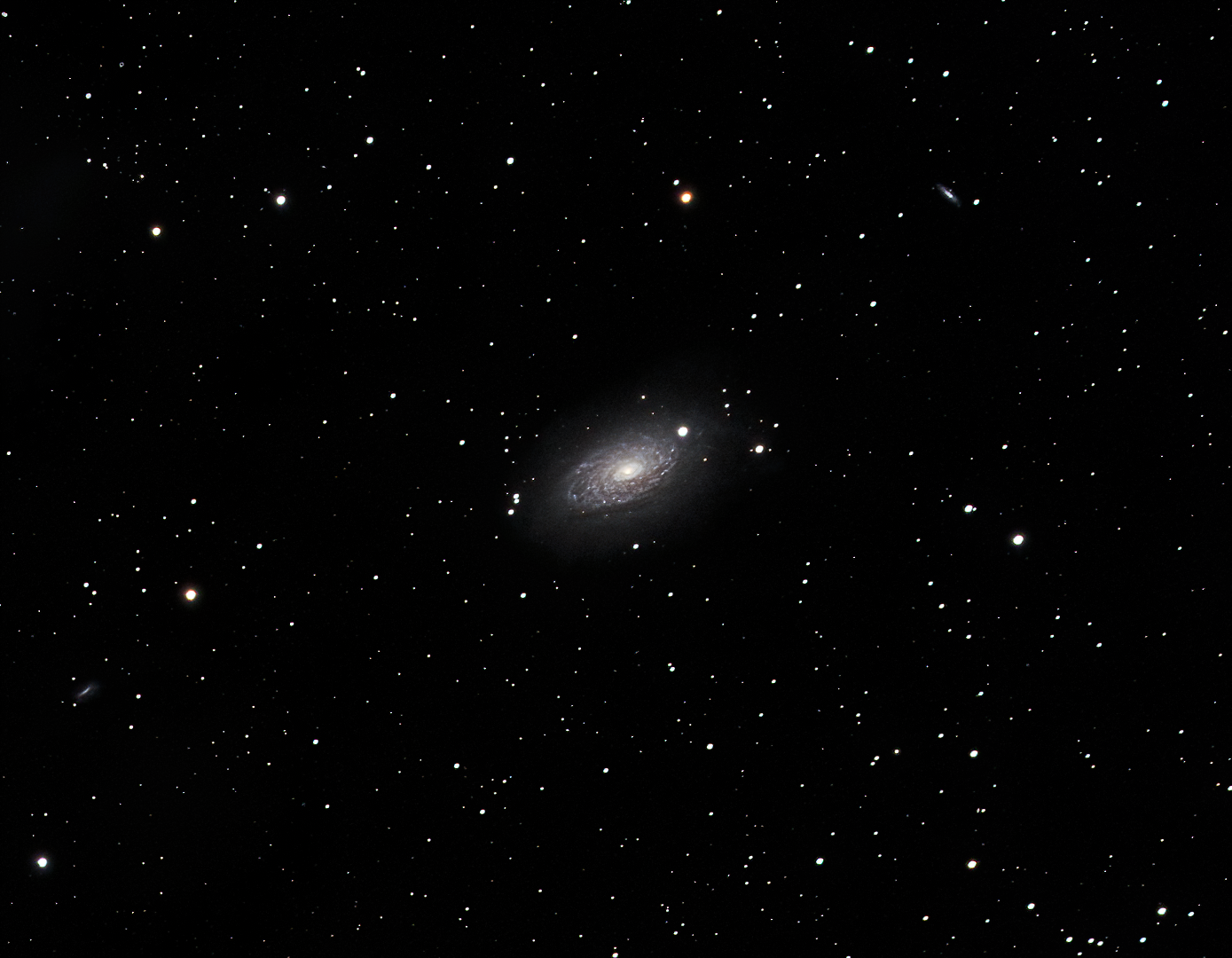Observation by Graham Roberts: Messier 63 - the "Sunflower"
Uploaded by
Paul Downing
Observer
Graham Roberts
Observed
2020 Apr 15 - 22:00
Uploaded
2020 Jun 16 - 13:42
Objects
The Sunflower Galaxy (M63)
Planetarium overlay
Constellation
Canes Venatici
Field centre
RA: 13h15m
Dec: +42°01'
Position angle: -13°54'
Field size
1°09' × 0°54'
Equipment
- William Optics GT81 + Focal Reducer FL 382mm f4.72
- ZWO ASI1600mm Pro camera
Exposure
30 x L 17 x R 18 x G 23 x B 12 x Ha x 300 sec
Location
Redhill, Surrey, UK
Target name
Messier 63
Title
Messier 63 - the "Sunflower"
About this image
You don’t have to be an astronomer to appreciate Van Gogh’s wonderful evocation of the night sky in his 1889 painting Starry Night. He knew a thing or two about sunflowers too and I’ve often stopped by the National Gallery in Trafalgar Square to take a peep at his famous painting of them. However, it was still more than thirty years after completing these paintings that we first learned that such features as galaxies and the rest of the Universe even existed beyond our own Milky Way. Since then our knowledge of the cosmos has expanded considerably and today provides no end of imaging opportunities for the astrophotographer, subject to clear skies! Having started the galaxy season with M106 and, given the excellent conditions that prevailed throughout much of Spring this year, I chose to return to the same area of the sky again to image M63, AKA the Sunflower Galaxy. M63 has a spiral form but with no apparent central bar and in visible light lacks large scale spiral structure, although two-arm structures are noticeable in near infra-red. Instead the dust lanes are extensively disrupted producing a patchy appearance and is thus classified as a flocculent galaxy – in this case looking something like a sunflower. As previously discussed, most galaxies are a real challenge for my equipment but an earlier experiment indicated it might just be possible to image M63, the trick would be obtaining sufficient integration time. Fortunately three clear nights approaching a new moon in April provided over 8-hours of good subs, which I’m pleased to say resulted in a decent final image after all. The background sky is less busy than I would wish but there’s nice colour in the stars and also a few very small faint fuzzies on close inspection. Notwithstanding, M63 is clearly the star of the show (no pun intended) with the so-called flocculation clearly evident and numerous random dust lanes criss-crossing the entire galactic disc.
Although in 1924 Edwin Hubble’s recognition that galaxies, such as our own, existed outside the Milky Way, M63 was discovered by Pierre Méchain and catalogued by Charles Messier in 1779, long before Van Gogh’s paintings. He might conceivably have known of its presence therefore but not what it was and would surely be inspired to see and know about the Sunflower Galaxy as we do today.
Files associated with this observation
Like this image
Copyright of all images and other observations submitted to the BAA remains with the owner of the work.
Reproduction of work by third parties is expressly forbidden without the consent of the copyright
holder. By submitting images to this online gallery, you grant the BAA permission to reproduce them in
any
of our publications.


